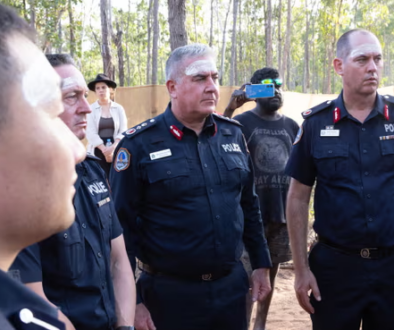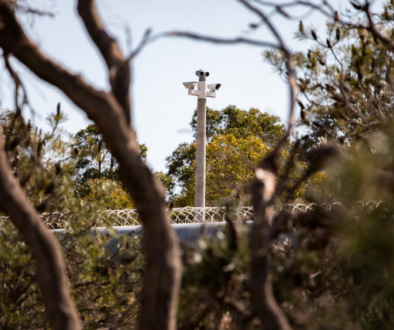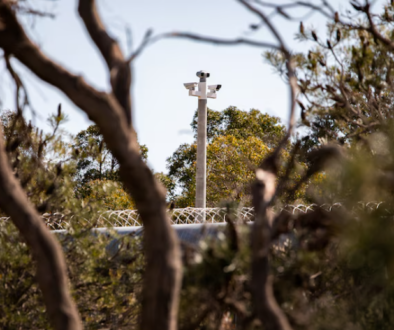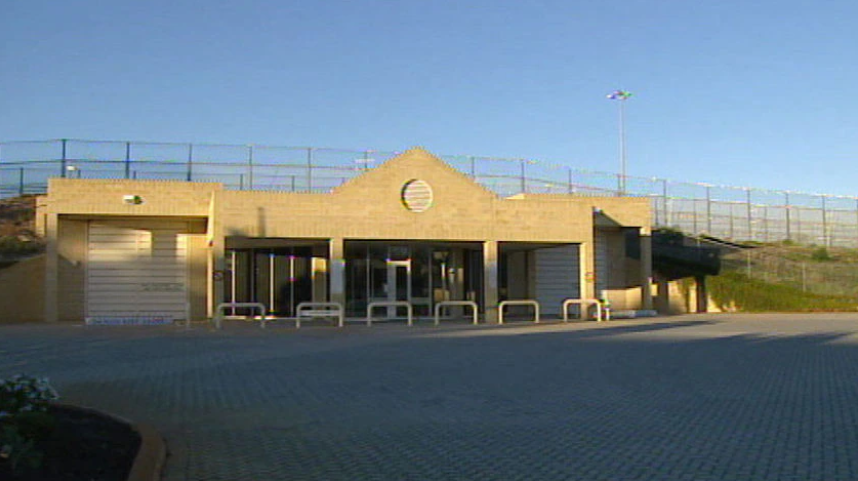
WA government says transfer of Banksia Hill detainees to Casuarina has ‘worked’
Originally published on abc.net.au written by Rebecca Trigger
Moving “violent young offenders” out of Western Australia’s only youth detention centre to a separate unit at an adult prison has “worked”, the WA government says.
The comments follow widespread criticism of conditions for children being held in detention, in both the existing Banksia Hill Detention Centre and an ad hoc facility set up in a section of Casuarina — one of the state’s maximum security male prisons.
Last month the Department of Justice moved 17 children, including one aged 14, to the unit at Casuarina, dubbed “Unit 18”.
Their hands and ankles were reportedly shackled during the move.
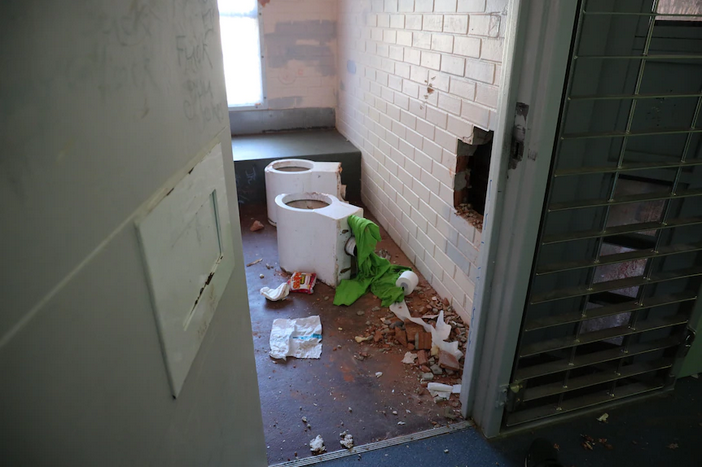
Reports of self-harm emerge following transfer
There have been subsequent reports of four of those children being taken to hospital after attempted self-harm.
The West Australian has reported four children harmed themselves with shards of broken glass, something the ABC has been unable to immediately verify.
The Department of Justice declined to provide figures on the number of children at Unit 18 that had self-harmed or attempted suicide since they were moved there on June 20.
The department said there were now 16 children inside Unit 18.
Corrective Services Minister Bill Johnston said he would not comment on individual cases, but added the “good news” was that Banksia Hill was now running well.
“Whilst we still have this difficult to manage cohort at Unit 18, for the overall majority of young offenders who are at Banksia Hill, they’re now in a much better environment,” he said.
“It was not functioning to have these young offenders causing violence at Banksia Hill, and so that the other kids who were not being violent, were not acting out, were not getting the services they need because the facility was constantly going into lockdown.”
Improvements in behaviour following move
He said there had not been any significant disturbance at Banksia Hill since moving those children on July 20.
And the Minister said some of the young offenders at Unit 18 were starting to improve their behaviour.
“Now, it’s not sustained and I’m not going to comment on individual cases but as we are confident those young offenders can reintegrate into Banksia Hill, we’ll continue to bring them back,” he said.
But he conceded the Intensive Supervision Unit (ISU) at Banksia Hill was not “fit for purpose”.
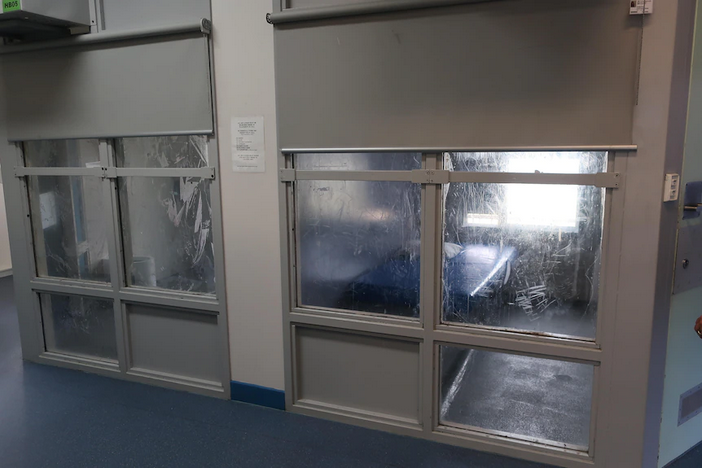
“We know we need to improve the ISU so it has a more therapeutic environment,” he said.
“At the moment we have violent and disturbed offenders in ISU, that’s completely unacceptable.”
He said a new unit would be constructed at Banksia Hill to provide a more therapeutic environment.
According to figures provided to WA Parliament during budget estimates, the average hours children at Banksia Hill spent outside their cells each day was 9.37 in 2020-2021, falling to 7.6 hours in 2021-2022.
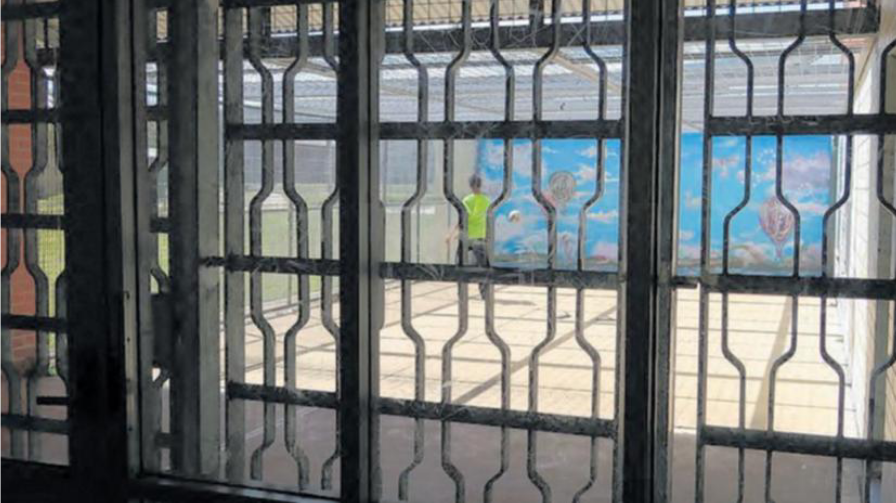
Self-harm on the rise at Banksia
There has been a dramatic rise in suicide attempts and self-harm incidents in the past three years.
There were two recorded suicide attempts, one serious self-harm incident and 105 minor self-harm incidents at Banksia Hill in 2020.
That compares with 31 suicide attempts, six serious self-harm attempts and 314 minor self-harm incidents in 2021.
In 2022, there had already been 20 suicide attempts and 285 self-harm incidents by June 20.
The longest-serving president of the Children’s Court of WA, retired Judge Denis Reynolds, has told the ABC the transfer of children to a unit at Casuarina represented a “broken” system.
He said the court had lost confidence in the state’s justice system.
Judge says figures likely tip of the iceberg
The former judge said the 20 suicide attempts likely only represented the tip of the iceberg.
“We need to also look at those children who have also gone back into the community,” he told ABC Perth.
“Many of them turned 18 and subsequently committed suicide in the community, or perhaps in an adult prison facility.”
He believes in excess of 100 young lives of former Banksia Hill detainees had been lost to suicide in the community in the past two decades.
Mr Reynolds said following a riot at Banksia Hill in 2013, the facility moved to a more punitive approach.
“It clamped down with grills on fences, razor wire,” he said.
“Relationships between the people that work there and the children were never valued and seen as the best means of security.”
He blamed government and the senior executive at the Department of Justice.
“I think there has been a failure at both the political and the bureaucratic level,” he said.
“There’s a lack of political will and leadership in combination with bureaucratic incompetence.”
The WA government has committed $7.5 million to building a crisis care unit at Banksia Hill and an additional $2.6 million will be spent on fencing and “hardening works” for Jasper Unit at Banksia.
Staffing boost needed to build caring relationships, Commissioner says
WA’s Commissioner for Children and Young people, Jacqueline McGowan-Jones, said children in Unit 18 needed a one-to-one care approach.
“The challenge is in having enough staff [who] can build one-to-one relationships,” she said.
“They are a very heightened at-risk cohort.”
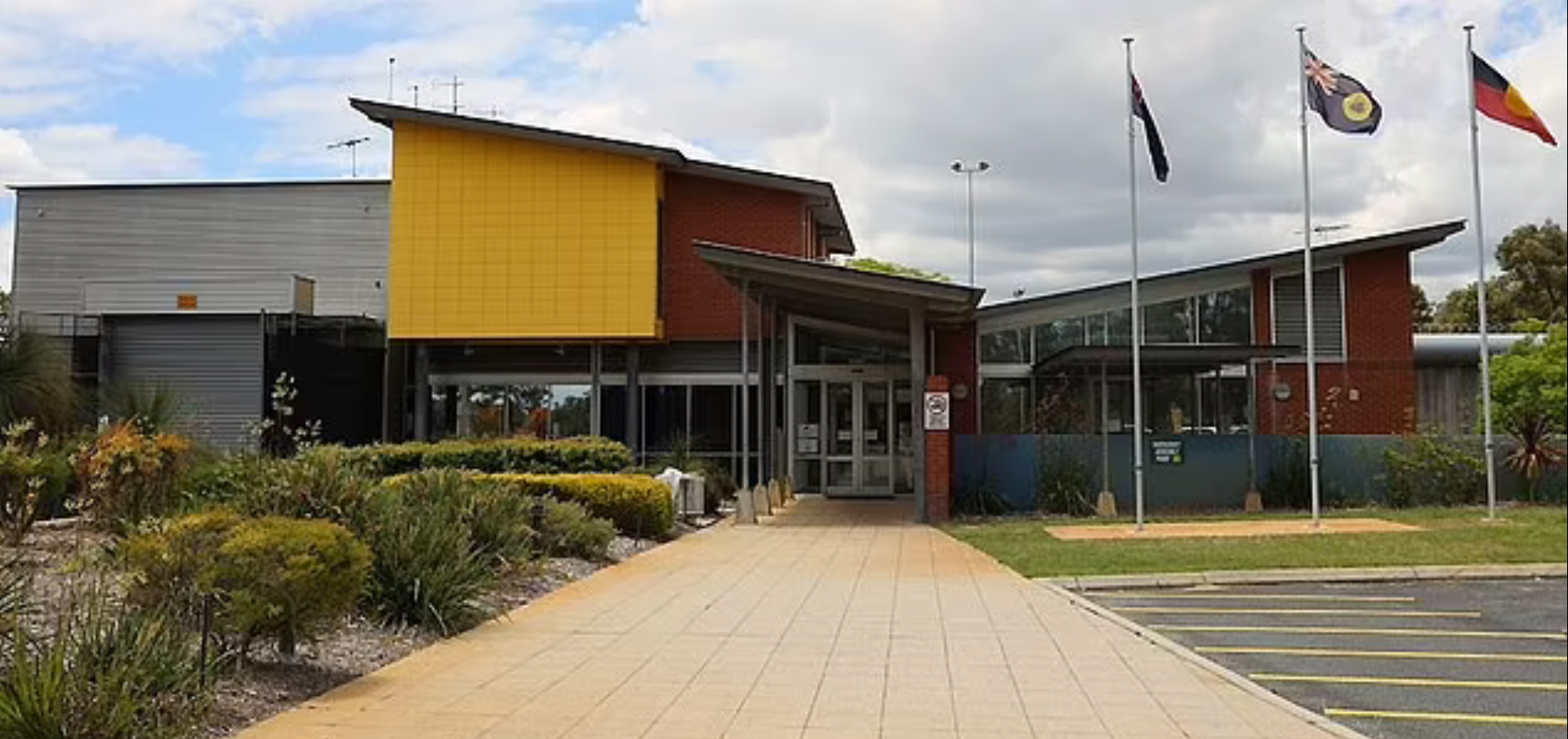
She said it was well-known young people often only reached out when they were almost at crisis point.
“And so they need that one-to-one support, they need to be able to see their psych or mental health nurse or a mental health practitioner quickly when they are asking for support,” she said.
“We do need to fund an intensive model of support that provides mentors, coaches, Aboriginal cultural advisors, psychologists, mental health nurses or mental health workers.
“The youth custodial officers need to be trained in suicide prevention strategies.”
Warning against setting ‘low expectations’
The Commissioner said the prison was trapped in a cycle where staff expected the kids to do something wrong.
“If you have low expectations for your kids, whether they’re kids in detention or your own kids, they themselves will live down to that expectation,” she said.
“We know that these kids, through their neurodevelopmental delay or other challenges that they have, they don’t understand consequences.
“Just saying to them, ‘well, you trashed your cell so that’s why you’re locked down’ will make no sense to them.
“They think they did that because they weren’t being attended to or somebody doesn’t like them and treats them like they’re a criminal.”
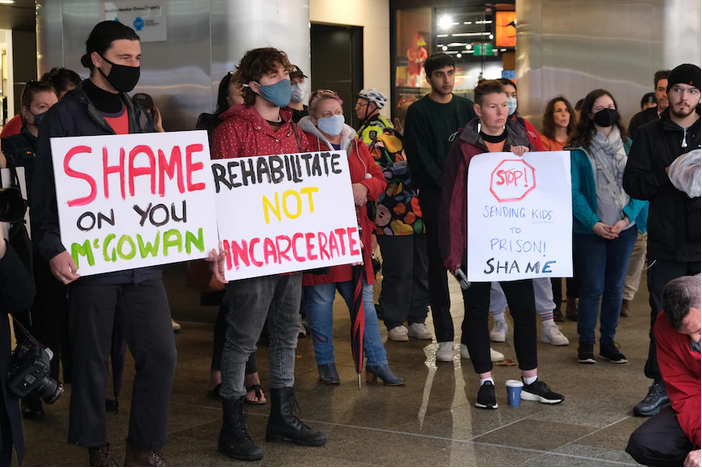
The Commissioner said the system needed staff that could take a different approach.
“What they need is a wraparound system that will support them,” she said.
Another $3.5 million will be spent on preventing children from being able to climb onto the roofs at the facility, and another $2.5 million on upgrading the CCTV system.
The department told Parliament it had recently developed a new operating philosophy for Banksia Hill that would have a greater emphasis on rehabilitation and therapeutic models.
Recidivism rates for young offenders have been on a downward trend since 2017-18, falling from 58.7 per cent of offenders to 49.2 per cent in 2021-2022.

WA government says transfer of Banksia Hill detainees to Casuarina has ‘worked’
Originally published on abc.net.au written by Rebecca Trigger
Moving “violent young offenders” out of Western Australia’s only youth detention centre to a separate unit at an adult prison has “worked”, the WA government says.
The comments follow widespread criticism of conditions for children being held in detention, in both the existing Banksia Hill Detention Centre and an ad hoc facility set up in a section of Casuarina — one of the state’s maximum security male prisons.
Last month the Department of Justice moved 17 children, including one aged 14, to the unit at Casuarina, dubbed “Unit 18”.
Their hands and ankles were reportedly shackled during the move.

Reports of self-harm emerge following transfer
There have been subsequent reports of four of those children being taken to hospital after attempted self-harm.
The West Australian has reported four children harmed themselves with shards of broken glass, something the ABC has been unable to immediately verify.
The Department of Justice declined to provide figures on the number of children at Unit 18 that had self-harmed or attempted suicide since they were moved there on June 20.
The department said there were now 16 children inside Unit 18.
Corrective Services Minister Bill Johnston said he would not comment on individual cases, but added the “good news” was that Banksia Hill was now running well.
“Whilst we still have this difficult to manage cohort at Unit 18, for the overall majority of young offenders who are at Banksia Hill, they’re now in a much better environment,” he said.
“It was not functioning to have these young offenders causing violence at Banksia Hill, and so that the other kids who were not being violent, were not acting out, were not getting the services they need because the facility was constantly going into lockdown.”
Improvements in behaviour following move
He said there had not been any significant disturbance at Banksia Hill since moving those children on July 20.
And the Minister said some of the young offenders at Unit 18 were starting to improve their behaviour.
“Now, it’s not sustained and I’m not going to comment on individual cases but as we are confident those young offenders can reintegrate into Banksia Hill, we’ll continue to bring them back,” he said.
But he conceded the Intensive Supervision Unit (ISU) at Banksia Hill was not “fit for purpose”.

“We know we need to improve the ISU so it has a more therapeutic environment,” he said.
“At the moment we have violent and disturbed offenders in ISU, that’s completely unacceptable.”
He said a new unit would be constructed at Banksia Hill to provide a more therapeutic environment.
According to figures provided to WA Parliament during budget estimates, the average hours children at Banksia Hill spent outside their cells each day was 9.37 in 2020-2021, falling to 7.6 hours in 2021-2022.

Self-harm on the rise at Banksia
There has been a dramatic rise in suicide attempts and self-harm incidents in the past three years.
There were two recorded suicide attempts, one serious self-harm incident and 105 minor self-harm incidents at Banksia Hill in 2020.
That compares with 31 suicide attempts, six serious self-harm attempts and 314 minor self-harm incidents in 2021.
In 2022, there had already been 20 suicide attempts and 285 self-harm incidents by June 20.
The longest-serving president of the Children’s Court of WA, retired Judge Denis Reynolds, has told the ABC the transfer of children to a unit at Casuarina represented a “broken” system.
He said the court had lost confidence in the state’s justice system.
Judge says figures likely tip of the iceberg
The former judge said the 20 suicide attempts likely only represented the tip of the iceberg.
“We need to also look at those children who have also gone back into the community,” he told ABC Perth.
“Many of them turned 18 and subsequently committed suicide in the community, or perhaps in an adult prison facility.”
He believes in excess of 100 young lives of former Banksia Hill detainees had been lost to suicide in the community in the past two decades.
Mr Reynolds said following a riot at Banksia Hill in 2013, the facility moved to a more punitive approach.
“It clamped down with grills on fences, razor wire,” he said.
“Relationships between the people that work there and the children were never valued and seen as the best means of security.”
He blamed government and the senior executive at the Department of Justice.
“I think there has been a failure at both the political and the bureaucratic level,” he said.
“There’s a lack of political will and leadership in combination with bureaucratic incompetence.”
The WA government has committed $7.5 million to building a crisis care unit at Banksia Hill and an additional $2.6 million will be spent on fencing and “hardening works” for Jasper Unit at Banksia.
Staffing boost needed to build caring relationships, Commissioner says
WA’s Commissioner for Children and Young people, Jacqueline McGowan-Jones, said children in Unit 18 needed a one-to-one care approach.
“The challenge is in having enough staff [who] can build one-to-one relationships,” she said.
“They are a very heightened at-risk cohort.”

She said it was well-known young people often only reached out when they were almost at crisis point.
“And so they need that one-to-one support, they need to be able to see their psych or mental health nurse or a mental health practitioner quickly when they are asking for support,” she said.
“We do need to fund an intensive model of support that provides mentors, coaches, Aboriginal cultural advisors, psychologists, mental health nurses or mental health workers.
“The youth custodial officers need to be trained in suicide prevention strategies.”
Warning against setting ‘low expectations’
The Commissioner said the prison was trapped in a cycle where staff expected the kids to do something wrong.
“If you have low expectations for your kids, whether they’re kids in detention or your own kids, they themselves will live down to that expectation,” she said.
“We know that these kids, through their neurodevelopmental delay or other challenges that they have, they don’t understand consequences.
“Just saying to them, ‘well, you trashed your cell so that’s why you’re locked down’ will make no sense to them.
“They think they did that because they weren’t being attended to or somebody doesn’t like them and treats them like they’re a criminal.”

The Commissioner said the system needed staff that could take a different approach.
“What they need is a wraparound system that will support them,” she said.
Another $3.5 million will be spent on preventing children from being able to climb onto the roofs at the facility, and another $2.5 million on upgrading the CCTV system.
The department told Parliament it had recently developed a new operating philosophy for Banksia Hill that would have a greater emphasis on rehabilitation and therapeutic models.
Recidivism rates for young offenders have been on a downward trend since 2017-18, falling from 58.7 per cent of offenders to 49.2 per cent in 2021-2022.

